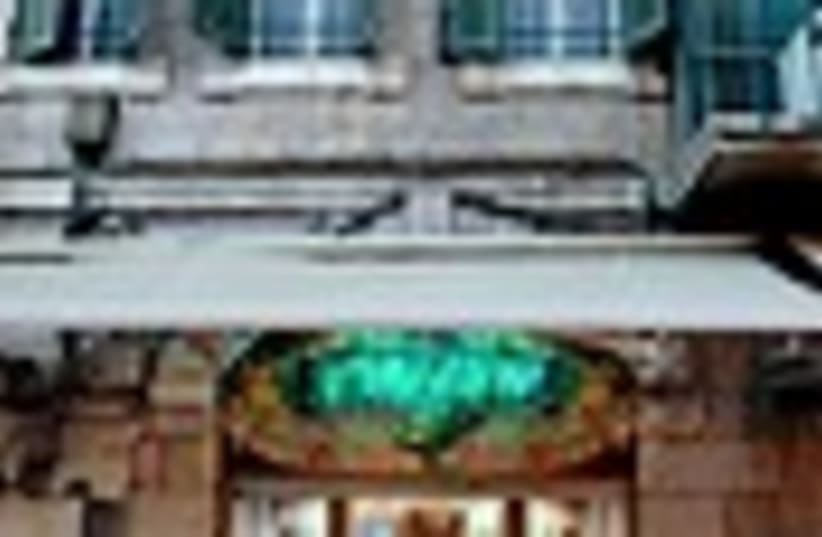You can always go downtown
Instead of being supplanted, city center shopping areas can easily coexist with and even benefit from large new malls.
Around 50 years ago, city-dwellers began picking up and deserting the center of town, opting instead for green suburbs and satellite towns. A number of years ago, this trend reversed and many middle-aged couples decided to move from their single family homes with yards to plush apartments in town. As with other trends, Israel was not far behind.
About 10 years ago the country was hit by the commercial equivalent of the move to the country: the shopping mall bug. Architectural monsters sprang up all over Israel, including in spots far from traditional commercial and residential areas. They gradually dried up trade in the old shopping centers and converted them into slummy areas. Now the trend is reversing itself.
"The commercial city centers are coming back to life," says Aliza Cohen, CEO of Reshef Nehasim. "This doesn't mean that the malls are going out of fashion - on the contrary, they are booming - but now there is room for both. The rejuvenation of the older commercial centers is not effecting the shopping malls. What is happening is that there is a shift in emphasis."
The stress is on utility. Shopping malls attract businesses which have entertainment and brand name elements. The public sees most shopping malls as places of entertainment and less as shopping centers.
"That is the reason," comments Cohen, "why the large grocery store chain Mega is setting up new points of sale in the centers of town, and as near as possible to residential areas. That is why such trendy brands as Café Aroma, Art Café and Café Hillel have opened up in Hazahav Mall in Rishon Lezion."
And indeed the traditional commercial centers are coming back to life: Rehov Ben Yehuda in Jerusalem, Rehov Dizengoff in Tel Aviv and Rehov Bialik in Ramat Gan are all booming with practically no vacant storefronts.
Rehov Bialik is a commercial center, the shopping Mecca of the nearly 250,000 residents of Ramat Gan and Givatayim. Monthly rentals now average $50/sq.m., but 18 months ago they ran $35/sq.m. The same type of increase also holds true for Dizengoff and Ibn Gavirol streets in Tel Aviv.
Despite the fact that Bialik is booming, it has not effected the Ayalon Mall in Ramat Gan or the new Givatayim Mall. Average monthly rentals in Ayalon fetch $75/sq.m. while at the Givatayim Mall they run $85.
"The advent of the new Givatayim Mall may not have effected rentals on Rehov Bialik, but it has effected rentals in some of Givatayim's main commercial thoroughfares such as Katznelson and Weizmann streets," says Ronen Cohen, general manager of Shavit Properties. "In the past 18 months, rentals have fallen from an average $40/sq.m. to less than $30."
But Givatayim shopkeepers are not complaining. Dror Topaz owns a jewelry business on Katznelson and he says that business increased with the construction of the mall. "I get more clients who used to shop in Tel Aviv and Ramat Gan. The mall in Givatayim has brought local shoppers back to town, and once they are here they compare prices between shops in the mall and on the street, and they realize we are much less expensive."
Yaniv Alon, the proprietor of a men's hair salon on the same street, is of the same mind: "I had nothing to fear from the mall because barbers do not set up shop in malls, but I must admit that lately the volume of customers has increased and this in part is due to the proximity of the mall."
if(catID != 151){
var cont = `Take Israel home with the new
Jerusalem Post Store
Shop now >>
`;
document.getElementById("linkPremium").innerHTML = cont;
var divWithLink = document.getElementById("premium-link");
if(divWithLink !== null && divWithLink !== 'undefined')
{
divWithLink.style.border = "solid 1px #cb0f3e";
divWithLink.style.textAlign = "center";
divWithLink.style.marginBottom = "40px";
divWithLink.style.marginTop = "40px";
divWithLink.style.width = "728px";
divWithLink.style.backgroundColor = "#3c4860";
divWithLink.style.color = "#ffffff";
}
}
(function (v, i){
});

